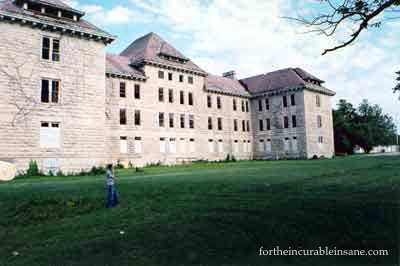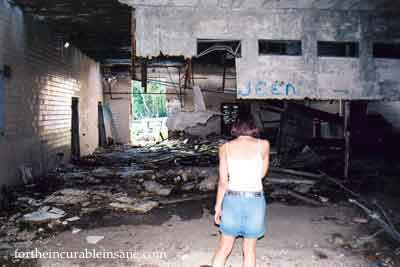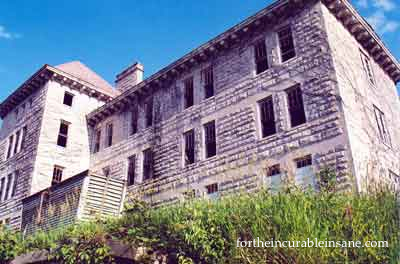Probably the most popular question I am asked is, “How did you get involved with making a film about the Peoria State Hospital?”
The answer is: completely by chance.
I grew up about an hour and a half from the Peoria State Hospital and never heard a peep about it. May it be that I was young and just finishing my second year of college; one would think such an influential place would be known by all- young and old. In 2004, I had to go to Bartonville for a freelance job I had taken. When I drove by what would turn out to be the Bowen building, its majestic beauty arose a curiosity within me that I couldn’t fight.
Weeks later, my friend and I returned to check it out. We went inside the now demolished cafeteria. Only after a moment of being inside, I told my friend I felt we should leave. The vibes I was getting from being there were unsettling, full of sadness. We went outside to get a closer look at the massive building and gazed at its unusual beauty in wonder. “What could it have once been?” we questioned.
Later that night, my friend instant messaged me with great excitement. When he had returned home, he started researching the place and learned that it was rumored to be a haunted abandoned insane asylum. I shuttered with joy, “How exciting,” I thought and never really gave the place another thought.
Fast-forwarding three years, I was given a short deadline of only four months to make a 20-minute documentary for my BA senior thesis. There were many subjects I wanted to cover but couldn’t because of time or location restrictions. Upon brainstorming possible topics, my memory rehashed the old abandoned insane asylum I had briefly come across three years previous. To my surprise, no one had made any type of documentary about the place- even since it’s closing in 1973. I couldn’t understand why no one would be interested and willing to dig into such an involved story.
Remembering back to the feelings that came over me when visiting before, I was under the impression that the asylum was one of the bad ones. You know the stories- the maltreatment of patients, the neglect, and the experimenting. My mind wandered into the darkness, wondering what I would find when I would start learning about the secrets of the place.
Once I started to dig deeper into the history, I realized that a 20-minute thesis wasn’t going to be enough time required to explain the whole story. I simply didn’t have the time but made do with what I had with the intentions of probably making a feature some time after college. The response I received from my peers and community were overwhelmingly positive. Some said, “This should be on PBS!” I would laugh as I felt my thesis wasn’t anywhere near PBS quality. We were given a strict 20-minute cutoff as well as four very brief months, which I was juggling along with a full-time school schedule, part-time production schedule, and a part-time waitressing gig. The time wasn’t there that required a full storytelling. And even now, after all these years of working on this project, there are still things I wish I could have included in the film. Two hours is already asking a lot of your viewers, but I could have easily added another hour just to tell some of my favorite stories I came across in my research.
Through it all and all that I have learned, I still find it mind-blowing that many people (especially Illinois natives) have never heard of the Peoria State Hospital.
Many of my interviewees agreed that this place is one of those places that can suck you in. The true stories of its embedded history leave you craving for more. What happened and who lived there? What did they do and why were they there? I had so many questions, more questions than available answers. There’s a lot I still wish I knew about the asylum but what I was pleased to discover all those years ago was that the Peoria State Hospital wasn’t one of those evil asylums of the 20th century. Dr. Zeller’s work was progressive as well as absurd to outsiders. But it was here that helped shape the humane side of mental treatment in America. I only hope my film helps to educate those ignorant to mental illness as well as those oblivious to the importance of saving the historical grounds of the asylum. The worth that can be found within these stories is truly invaluable.




0 Comments